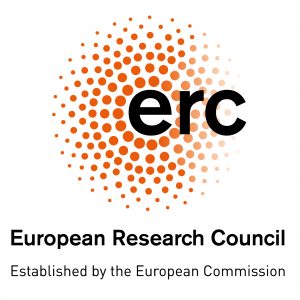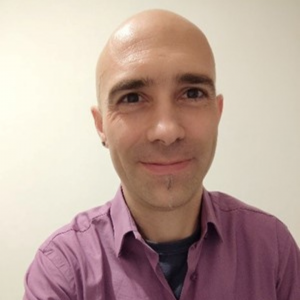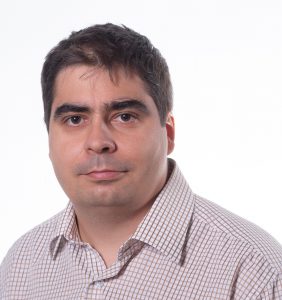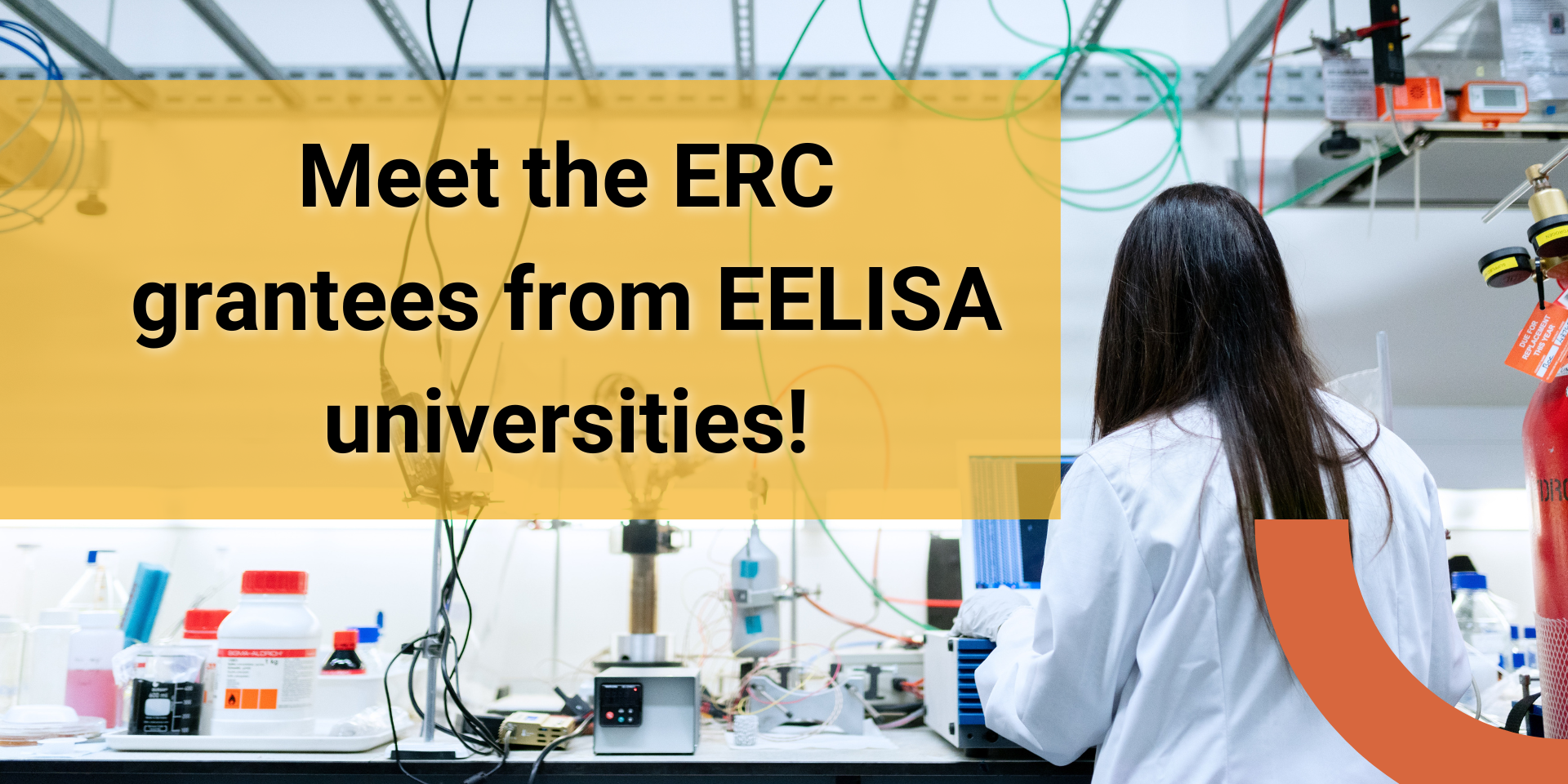
A total of 11 researchers from EELISA universities were awarded one of the prestigious European Research Council (ERC) grants in the most recent calls: consolidator grants (results announced on 31 January 2023) and starting grants (results announced on 22 November 2022).
With its grants, the ERC supports highly qualified young scientists with several years of research experience (2-7 years for starting grants and 7-12 years for consolidator grants) and a promising scientific track-record. The ERC is “the premier European funding organisation for excellent frontier research. It funds creative researchers of any nationality and age, to run projects based across Europe”.
ERC Consolidator Grants
- MIA-NORMAL – Medical Image Analysis with Normative Machine Learning. Prof. Dr. Bernhard Kainz (FAU)
- EpiPhys – Physics of the first mammalian epithelium. Jean-Léon Maître (PSL)
- BREATHE – Building a space Revolution: Electric Air-breathing Technology for Highatmosphere Exploration. Tommaso Andreussi (SSSA)
- MIRACLE: Quantum-engineered lattice-matched III-V-on-Si multijunction solar cells. Sergio Fernández Garrido (UPM)
- off-coustics: Minimisation of the offshore wind and tidal turbine acoustic footprint on marine life. Esteban Ferrer (UPM)
- TWISTRAIN – Straintronic control of correlations in twisted van der Waals heterostructures. Péter Makk (BME)
ERC Starting Grants
- DISCOVER – Discovering and analyzing visual structures. Mathieu Aubry (ENPC)
- gutTEimpact, Illuminating the role of selfish genetic elements in somatic tissue homeostasis and aging. Katarzyna Siudeja (PSL)
- STEMGUARD, Deciphering stem cell immunity. Enzo Poirier (PSL)
- ELECTROPHOBIC HydroPHOBIC solvation at ELECTROchemical interfaces. Simone Pezzotti (PSL)
- aCCuracy, Turning gold standard quantum chemistry into a routine simulation tool: predictive properties for large molecular systems. Peter Nágy (BME)

Prof. Dr. Bernhard Kainz has been Professor of Image Data Exploration and Analysis at the Department of Artificial Intelligence in Biomedical Engineering at FAU since September 2021. He is also Associate Professor at the Department of Computing at Imperial College London. Before that, Kainz worked between 2011 and 2013 as a postdoctoral researcher at the Institute for Computer Graphics and Vision at the Technical University of Graz, and in 2013 received a FP7 Marie Sklodowska Curie Individual Fellowship at the Department of Computing at Imperial College London. He also teaches as a guest lecturer at the Department of Imaging Science and Biomedical Engineering at King’s College London, and has done since he worked there as a research fellow in 2015.
About the project: MIA-NORMAL – Medical Image Analysis with Normative Machine Learning
Imaging is playing an increasingly significant role in medicine, but analyzing images is both time-consuming and costly. It not only ties up existing resources and leads to an increase in costs, it also causes long waiting times for patients. With their machine learning project, Professor Kainz and his team hope to train computer programs to recognize healthy tissue structures. Artificial intelligence would then be able to pre-sort the images obtained during the diagnosis process into “probably healthy” or “possibly sick”. It goes without saying that the final decision is taken by the medical experts. With the support of the machines, however, medical staff would gain valuable time that they could then use to investigate any images deviating from the norm more thoroughly. As a knock-on effect, more patients could be treated, and patients would not have to wait so long to find out whether the images indicated that there was a problem with their health.

Esteban Ferrer holds a professorship in applied mathematics at the School of Aeronautics at the Universidad Politécnica de Madrid (UPM). He obtained his Ph.D. by the University of Oxford (UK) and has 20 years of industrial and academic experience in developing numerical techniques for fluid dynamics. He works actively with industry and coordinates two EU projects. His main interests include high-order methods for fluid dynamics, turbulence modelling, machine learning, aeroacoustics for aeronautics and wind energy. He has written more than 90 journal and conference papers on these topics.
About the project: off-coustics – Minimisation of the offshore wind and tidal turbine acoustic footprint on marine life.
Recent evidence suggest that offshore wind and tidal turbines can have an acoustic damaging impact on marine life, due to the sustained generation of noise, which propagates very efficiently underwater. The underwater noise produced by offshore farms represents a source of pollution not yet well studied. Indeed, there is no previous in-depth research explaining the propagation of the noise produced by offshore turbines, neither specific regulation. In this context, the project off-coustics will provide insights into the physics governing the aero/hydro-acoustic generation and propagation from offshore wind and tidal farms. Control of these physics will enable the design of silent offshore farms facilitating renewable energy with zero acoustic impact. The research team involved in the off-coustics project will perform simulations and experiments in wind tunnels and water tanks to analyse the acoustic propagation of turbines, and will optimise the farms to minimise noise while maintaining energy generation. The aim is not to change the geometry of the turbines but to introduce changes in the operational conditions to control the noise. The environmental and socio-economic challenges that the project aims to address are very important. The Spanish Government is finishing a map of areas where offshore wind farms could be located, with the aim of launching the first energy auction in 2023. This will lead to a surge in the number of offshore farms which needs to be carefully planned.

Sergio Fernández Garrido is a “Ramón and Cajal” fellow at the ISOM (Institute for Optoelectronic Systems and Microtechnology) and member of the Department of Materials Science at the Universidad Politecnica de Madrid (UPM) since July 2022. In 2003, Sergio obtained a degree in Physical Sciences, with a specialisation in Optics and Structure of Matter at Universidad Autónoma de Madrid (UAM), and his PhD diploma at the UPM in 2009. During his PhD studies at the ISOM, Sergio was visiting researcher at the Solid-State Lighting and Display Center of University of California Santa Barbara and at the Pressure Research Center of the Polish Academy of Sciences. He worked at the Paul-Drude-Institute in Berlin from 2010 to 2018. In 2018, he returned to Spain with the prestigious “Ramón y Cajal” fellowship.
About the project: MIRACLE: Quantum-engineered lattice-matched III-V-on-Si multijunction solar cells
The project MIRACLE will explore a new approach to combine the efficiency and stability of III-V tandem solar cells with the cost-effectiveness offered by the silicon technology. According to the principal investigator, Sergio Fernández Garrido, in case MIRACLE is successful, not only there will be a strong impact on the photovoltaic industry, but also a new door will be opened to integrating other opto-electronic devices on silicon, such as lasers and photo-detectors, which are fundamental devices for some applications and key elements for the development of photonic integrated circuits.
Besides the fundamental study of the physical properties of novel quantum engineered III-V nanostructured materials, the project MIRACLE might have important social and economic impacts. In particular, the new double- and triple junction tandem solar cells that the project aims to produce on silicon as proof-of-concept have theorical maximum photoconversion efficiencies of up to 47%, which will help reduce the surface of PV panels and, therefore, their environmental impact. Moreover, the increase in the energy production per surface unit will also be beneficial for certain industries and applications with room- limitations such as the automotive industry, unmanned aircraft systems, portable generators, and rooftop PV systems.

Mathieu Aubry is a tenured researcher in Computer Vision at École des Ponts ParisTech in the Imagi https://imagine-lab.enpc.fr/ ne group of the LIGM lab (UMR8049). He obtained his PhD at ENS in 2015, co-advised by Josef Sivic (INRIA) and Daniel Cremers (TUM). In 2015, he spent a year working as a postdoc with Alexei Efros in UC Berkeley. He has a leading role in several digital humanities projects, including the Young Researcher EnHerit ANR project and the VHS and EIDA collaborative ANR projects.
About the project – DISCOVER (Discovering and analyzing visual structures)
The goal of this project is to shift the dominant paradigm of learning-based computer vision: instead of systems attempting to replace human interpretation by providing predictions, we will develop approaches to assist experts in identifying and analyzing patterns. Indeed, while the success of deep learning on visual data is undeniable, applications are often limited to the supervised learning scenario where the algorithm tries to infer a label for a new image based on the annotations made by experts in a reference dataset. In contrast, we will take as input images without any annotation, automatically identify consistent patterns and model their variation and evolution, so that an expert can more easily analyze them. I will introduce and develop the concept of visual structures. Their key features will be their interpretability, in terms of correspondences, deformations, or properties of the observed images, and their ability to incorporate prior knowledge about the data and expert feedback. I propose two complementary approaches to formally de ne and identify visual structures: one based on analyzing correspondences, the other on learning interpretable image models. We will develop visual structures in two domains in which breakthrough progress will open up new scientific discoveries: historical documents and Earth imagery. For example, from temporal series of multispectral Earth images, we will identify types of moving objects, areas with different types of vegetation or constructions, and model the evolution of their characteristics, which may correspond to changes in their activity or life cycle. Ultimately, experts will still be needed to select relevant visual structures and perform analysis, but DISCOVER will revolutionize their work, trivializing tedious annotation tasks and even allowing them to work on issues they would have been hard-pressed to identify in the raw data.

Tommaso Andreussi is Professor of Aerospace Engineering at the Mechanical Intelligence Institute of the Sant’Anna School of Advanced Studies. He defended his PhD at Scuola Normale Superiore of Pisa in 2008 and, in the following years, he focused on the theoretical modelling and experimental investigation of plasma thrusters for space applications. From 2010 to 2022, he worked as senior researcher at Alta S.p.A. and then as technical manager at SITAEL S.p.A., where he was responsible for R&D activities and qualification of electric propulsion systems, with a specific focus on high-power Hall thrusters, air-breathing electric propulsion, and plasma diagnostics.
About the project BREATHE (Building a space Revolution: Electric Air-breathing Technology for High-atmosphere Exploration)
Airflight and spaceflight gave mankind different perspectives and opened new paths for communication. A gap remains, between 50 km and 250 km of altitude, where the rarefied atmosphere makes it hardly viable to operate with either spacecraft or planes. Air-breathing Electric Rockets (AERs) can allow to lower the altitude of spacecraft operations below 250 km, in Very Low Earth Orbits (VLEOs). Operations in VLEOs will give radical advantages in terms of payload performance, protection from radiations, and debris mitigation. AERs combine an intake to collect the residual atmosphere in front of the spacecraft and an electric thruster to ionize and accelerate the atmospheric particles. Several AER realizations have been proposed, but the few end-to-end tests highlighted the need to improve the AER design and the representativeness of simulated atmospheric flows. The difficulty in recreating the VLEO environment on ground limits the data available to validate modelling efforts. The BREATHE project will focus on the development of models and simulations for atmospheric flows and low-temperature plasmas, the realization of a controlled environment for on ground testing, and the characterization of technological solutions for an AER-based CubeSat platform. The project objective is to increase the understanding of air-breathing electric propulsion and to pave the way toward the in-orbit demonstration of the AER concept.

Dr. Péter Nagy is a research associate professor at the Department of Physical Chemistry and Materials Science at the Budapest University of Technology and Economics (BME). Before joining BME in 2015, Péter obtained his Master’s degree in chemistry and his PhD in theoretical chemistry at the Eötvös Loránd University. Péter is currently leading the Molecular Quantum Simulation Group and focuses on the development and application of accurate and efficient quantum chemistry approaches for complicated molecular interactions and catalytic reactions. Péter and his team are among the main contributors of the open-source MRCC quantum chemistry program used worldwide for computational modeling
About the project aCCuracy — Turning gold standard quantum chemistry into a routine simulation tool: predictive properties for large molecular systems
We develop molecular quantum simulation approaches targeting a long-standing dilemma between controllable predictive power and affordable computational time. While the outstanding reliability of quantum chemistry’s gold standard model is repeatedly corroborated against experiments, traditionally it is limited to the size of an amino acid molecule.
First, we will accelerate our cutting-edge gold standard methods up to a few thousand atoms via concerted theoretical developments and high-performance software design. Additionally, we will take into account biochemical, crystal, and solvent environment effects via cost-efficient embedding models. Second, we will implement practical models to compute experimentally relevant dynamic, spectroscopic, and thermodynamic properties for large molecules at the gold standard level. This will enable us and the users of our open-access codes to model and understand intricate chemical processes with chemical accuracy, including challenging covalent- and non-covalent interactions in supramolecular and protein-ligand binding as well as in organo-, organometallic, surface, and enzyme catalytic reactions.

Péter Makk is associate professor at the department of physic at BME (Budapest University of Technology and Economic) since 2019 and leader of the researcher group Momemtum since 2021. Péter Makk holds a PhD in Phsysics by BME, having a important track record in research, including: Momentum Grant, Hungarian Academy of Sciences, 202; Marie Curie Grant 2018; FlagERA network TopoGraph; OTKA FK123894, PD121052 2016; Sciex postdoctoral fellowship, 2012.
About the project TWISTRAIN – Straintronic control of correlations in twisted van der Waals heterostructures
In the landmark discoveries of previous years it was found that in 2D materials placed on top of each other at a magic rotation angle, correlated phases appear, which often have topological character. Despite the immense interest, the understanding of their behaviour at the microscopic level is limited, which calls for further experiments and novel experimental tools.
In this project we will implement techniques that are radically new in this field: hydrostatic pressure and mechanical strain to uncover the ground state properties of twisted graphene and transition metal dichalcogenide heterostructures. Since the interlayer coupling plays the dominant role, changing the distance of the layers with hydrostatic pressure has a dramatic effect on the band structure and the correlated phases that emerge. The symmetries of the system can be deterministically broken by strain patterns applied in-situ.

